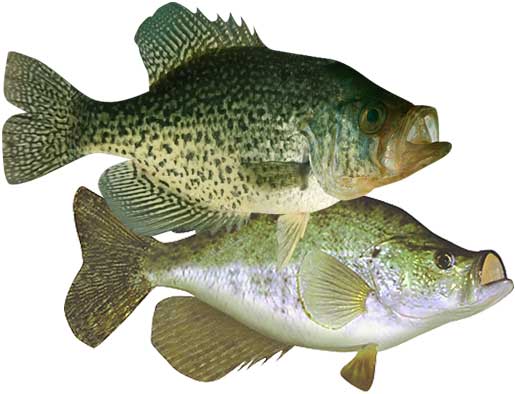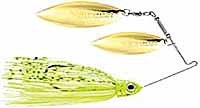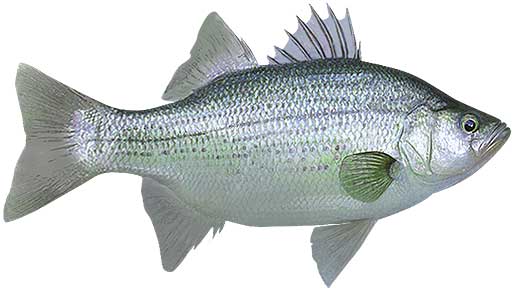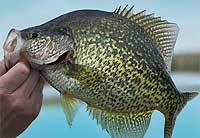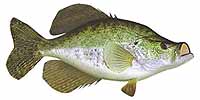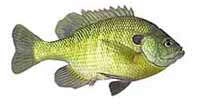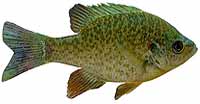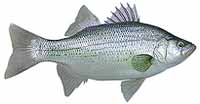Fishing Report For Lake Greeson, AR
By Rick Seaman
September 1, 2025
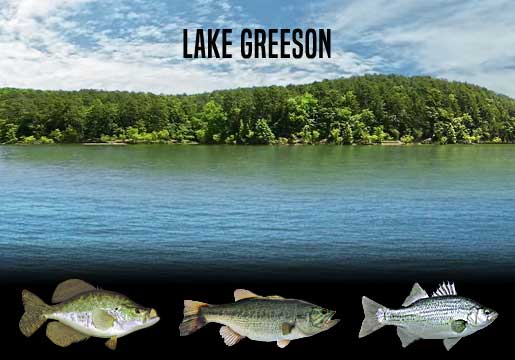
Fishing Reports
Popular Fish Species Lake Greeson, AR
Black & White Crappie
Current Report: Good To Very Good
FALL. Baitfish, which will be moving into shallow flats, coves and bays, will draw crappie into these areas. Here they will feed heavily in preparation for the cold Winter. Minnows, hair jigs, and crappie jigs, are good options during this feeding marathon. Late Fall starts the migration deeper toward winter holding areas, for both crappie and baitfish. Flutter spoons are ideal during this transition
WINTER. Once the shallows start cooling rapidly, crappie will migrate away from the shallows to deeper holding areas, mostly off shore. At this time they are typically caught using a very slow presentation, in 10 to 20 feet of water. If they are suspending in open water, they often relate to some cover, or structure change, directly below them.
SPRING. In early Spring, crappie begin staging in 5 to 8 feet of water, just outside spawning bays and shallow flats. Spring is prime time to be on the water, as crappie have moved shallow to spawn. At that time, they are typically caught in 2 to 4 feet of water. Docks, brush, wood and vegetation are where most anglers are catching good numbers using small crappie jigs or live minnows. After the spawn, crappie typically move outside the spawning area and hold on the closest cover. Once they move deeper, anglers report success using fish finders and forward facing sonar to locate schools of crappie, which tend to stack vertically around cover. Light tackle, with 4 lb to 8 lb line, is a popular choice.
SUMMER. Water temperatures warm, and crappie fishing is usually pretty good. Now that the spawn is over, and the hot Summer sun is warming the shallows, crappie have retreated to depths of 12 to 20 feet, or embedded in the shade of heavy vegetation. This is a good time to focus around bridge pilings and deeper docks. Anglers are also locating schools of crappie hanging over deep structure and around creek channel edges.
Largemouth Bass
Current Report: Good
FALL. Now that Fall has arrived, bass here are following schools of baitfish into coves and shallow bays where topwater, jerkbaits, crankbaits, and slow-rolled spinnerbaits are catching a lot of bass. Later in Fall, as deeper water cools, bait and bass move out to ledges, channel edges, points and humps where flutter spoons and jigs are often good choices.
WINTER. Winter will isolate them around slightly deeper structure, flats, points and creek channels. They can be found from 15 to 40 feet deep. Here they hold, feeding less frequently, awaiting warmer water to return in Spring.
SPRING. Once water temperatures rise into the low 60's, largemouth will move from deep wintering holes, to shallower water nearby spawning areas. Vibrating jigs, jerkbaits and spinnerbaits typically get bites just away from the shoreline. At this time they are feeding aggressively and preparing for the spawn. Once water warms into the mid to high 60's, they will move into 1 to 4 feet of water, and create nests, then lay their eggs. Immediately afterwards, females move to deeper water for resting, and males remain to guard the eggs, and then the fry. After a couple weeks, the males also move to slightly deeper water. Crankbaits, vibrating jigs, plastic worms and swimbaits are catching bass during this period.
SUMMER. Water temperatures will warm considerably in Summer. Bass will feeding shallow, early and late in the day, where they will be caught on topwater, crankbaits and swimbaits. Wacky-rigged stick worms always catch finicky bass when the bite is slow. Largemouth bass here feed on gizzard shad, threadfin shad, small sunfish and crawfish. During the hotter parts of the day, they are being caught on points, channel edges, and ledges 15 to 45 feet deep. Good reports seem to be from anglers fishing around Bear Creek, Self Creek, and the Rock Creek Arm, as well as fish attractors all over the lake.
.
White Bass
Current Report: Poor To Fair To Good To Very Good To Excellent
FALL. Early Fall finds white bass chasing baitfish that have moved into shallow coves and bays, from 5 to 20 feet deep. Small spinnerbaits, lipless crankbaits and underspins are catching good numbers of whites. Later, once the shallows cool considerably from chilly Fall temperatures, schools of white bass, along with baitfish, move deeper. They are relating to most any structure, which includes drops, humps, timber, and creek channels, in deeper water.
WINTER. Winter for white bass is a continuation of Fall patterns, except slightly deeper, around 15 to 30 feet. They are being caught on the same lures, but most are caught using a slower retrieve.
SPRING. White bass start their spawn run once the water temperature reaches the mid 50's, where they migrate to the river, inflowing creeks, or along windy points where they stay for several weeks. Early Spring is a prime time to fill the livewells with some fat white bass. Spinnerbaits, curly-tail jigs, underspins, small crankbaits, small jerkbaits, and most any lure that resembles baitfish, will catch these feeding whites. As the water temperatures continues warming, they move out of spawning areas, into slightly deeper water. Look for them following schools baitfish in 15 to 25 feet deep. Also, watch for feeding frenzies when they chase schools of bait to the surface, and the fishing can be spectacular.
SUMMER. Summer finds white bass congregating in the main lake area, following and feeding on baitfish. They are being caught on slow-rolled spinnerbaits, curly-tail jigs, underspins, spoons and small crankbaits, depending on the depth of the baitfish.
Fishing Video
Fish species to fish for...
Guide to fishing for largemouth bass, spotted bass, channel catfish, flathead catfish, blue catfish, black crappie, white crappie, bluegill, redear sunfish and white bass at Lake Greeson in Arkansas.
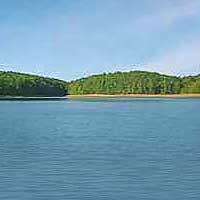
Lake Greeson is a 9,500-acre lake with over 75 miles of shoreline. Anglers can fish for bass, catfish, crappie, bream, sunfish and white bass. Many areas are available for fishing from the bank including parks, campgrounds and boat landings.
Primary fish species to catch
Click images for fishing tips and details about each species.
Today's Weather & Forecast
Fishing Boat Rentals
Click here for fishing boat rentals.
Public Boat Launch Ramps & Landings
Click here for boat ramps.
Marinas
Click here for marinas.
Fishing License
Click here for a Arkansas Fishing License.
Map - Fishing & Access
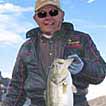
Rick Seaman is a fishing enthusiast with over five decades of fishing experience, a retired tournament fisherman, author of numerous published articles on fishing, and co-author of the book "Bass Fishing - It's not WHAT you throw, It's WHERE you throw it".
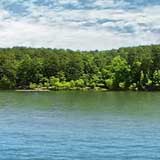
Contact Information
Self Creek Lodge and Marina
Anchors Way
Kirby, AR 71950
870 398-5000
Fishing lakes in each state
090125
Lake Greeson, AR Report
ARKANSAS


Fishing for crappie and bass in west-central AR.


